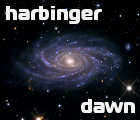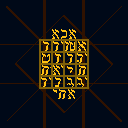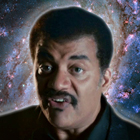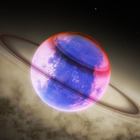|
Work progress 0.9.7.1
|
|
| JCandeias | Date: Monday, 11.11.2013, 20:57 | Message # 376 |
 Pioneer
Group: Translators
 Portugal
Portugal
Messages: 387
Status: Offline
| Quote SpaceEngineer (  ) So Uranus' and Neptune's systems actually may be similar to Jupiter's and Saturn's: a bunch of small inner moons, few major regular, and cloud of outer irregular. All 4 gas giants in our system shows the same architecture. So why do not take it as reference for all procedural systems? Such architecture appears in numerical simulations, and this is another good point for it. Only Triton disturbs the system, but it is classified as catastrophic capture event.
Well, let me order my reasons neatly 
Because:
1. The Solar System is way more organized than some extrasolar systems. If that's true for planets, why wouldn't it be for their moon systems?
2. It's not only Triton that disturbs the system.
2.1. It (the system) works well for the Jovian moons and relatively well for the Uranian moons, although here the differences between the largest of the irregulars and the smallest of the regulars are much less pronounced than around Jupiter. Puck is 1/3rd the size of Miranda, and there's also a Puck-sized outer moon, Sycorax; the largest of the Jovian irregulars, Amalthea, is almost 20 times smaller than Europa, the smallest of the Galilean moons.
2.2. The system only barely works for Saturn, which has a "regular area" with irregular moons in it, some, but not all, in the Lagrangean points of larger moons, a very large irregular in the same plane, Hyperion, and a large regular, the third largest of them all, with an inclined orbit, Japetus. Also, Phoebe, an outer irregular, more than half the size of Mimas, like Hyperion.
2.3. And the system doesn't work at all for Neptune.
3. So, it's 2 out of 4, not 4 out of 4. The only thing they all have in common is a difference, that is probably universal, between coplanar moons, probably formed together with their primaries, and non-coplanar, often retrograde moons, likely captured later from interplanetary space.
4. We shouldn't limit ourselves to what's known. We should limit ourselves to what's possible. Granted, this is more a matter of phylosophy than anything else, but I truly believe that within the vastness of the Cosmos just about anything that is possible will exist somewhere.
5. Hey, SE will have/has faster-than-light travel. Different moon arrangements are way more plausible than that! 
They let me use this!

|
| |
| |
| HarbingerDawn | Date: Monday, 11.11.2013, 21:19 | Message # 377 |
 Cosmic Curator
Group: Administrators
 United States
United States
Messages: 8717
Status: Offline
| Quote JCandeias (  ) The Solar System is way more organized than some extrasolar systems. If that's true for planets, why wouldn't it be for their moon systems?
Because numerical models show that there is no preferred organization among planets, but the same is not true for moon systems as far as I know. They are likely to have much more common patterns. So we should base SE on that: what is known to be true and what is likely to be true.
Quote JCandeias (  ) The system only barely works for Saturn
The general trend holds true; you're looking at it in too much detail.
Quote JCandeias (  ) SE will have/has faster-than-light travel. Different moon arrangements are way more plausible than that!
The FTL travel is a matter of necessity. The different moon arrangements are not, and are subject to the same standards of realism as the rest of the program.
Quote JCandeias (  ) We should limit ourselves to what's possible.
It's possible that we're not even here at all. When you take into account everything that might be "possible", then all sorts of absurdities arise. I don't think that something should be included in the program unless there is a compelling reason to include it, not the other way around. Otherwise we could end up with giant nebulous energy beings wandering around the galaxy while living supercomputers with advanced technology build hollow worlds the size of supergiant stars, and cosmic filaments which slice planets in half drift through the universe.
That is not what SE is about, nor should it be.
All forum users, please read this!
My SE mods and addons
Phenom II X6 1090T 3.2 GHz, 16 GB DDR3 RAM, GTX 970 3584 MB VRAM
|
| |
| |
| DeathStar | Date: Monday, 11.11.2013, 21:27 | Message # 378 |
|
Pioneer
Group: Users
 Croatia
Croatia
Messages: 515
Status: Offline
| Quote JCandeias (  ) 1. The Solar System is way more organized than some extrasolar systems. If that's true for planets, why wouldn't it be for their moon systems?
Give me some sort of proof for this. Allthough there are certainly very strange and chaotic systems in other stars, they only constitute a relative minority in comparison to others. In fact, most of the exosystems we know about contain only 1-2 planets that we know of, and that in no way can prove any sort of completely chaotic categorization. Granted, there should always be some sort of chaos, but it is not as widespread as you may think.
Quote JCandeias (  ) The system only barely works for Saturn, which has a "regular area" with irregular moons in it, some, but not all, in the Lagrangean points of larger moons, a very large irregular in the same plane, Hyperion, and a large regular, the third largest of them all, with an inclined orbit, Japetus. Also, Phoebe, an outer irregular, more than half the size of Mimas, like Hyperion.
I personally think that is completely untrue. Here we have the 'inner' area: Just a bunch of asteroids
Then the 'middle area' with Calypso and Telesto being the only bodies different from the rest, the others ice worlds, or a Titan
And the 'outer' area with chaotic, irregular asteroids
Everything is like in the new system
Quote JCandeias (  ) 2.3. And the system doesn't work at all for Neptune.
How so? Neptune has a group of inner moons (Simulated with the new system), an irregular medium sized moon (possible) and one or two small irregular asteroids far away(Simulated with the new system)
Quote JCandeias (  ) 4. We shouldn't limit ourselves to what's known. We should limit ourselves to what's possible. Granted, this is more a matter of phylosophy than anything else, but I truly believe that within the vastness of the Cosmos just about anything that is possible will exist somewhere.
Just because something is possible doesn't mean it should be everywhere. Chaotic systems do exist, but that doesn't mean every single system should be chaotic. I'm not against including chaotic systems, I am against them being everywhere.
Quote JCandeias (  ) 5. Hey, SE will have/has faster-than-light travel. Different moon arrangements are way more plausible than that!
They are plausible, but I repeat, that does not mean they should be everywhere. I, for one would hate for the new system to be replaced with an absolutely chaotic one, and so would probably many other people.
Edited by DeathStar - Monday, 11.11.2013, 21:48 |
| |
| |
| JCandeias | Date: Monday, 11.11.2013, 21:29 | Message # 379 |
 Pioneer
Group: Translators
 Portugal
Portugal
Messages: 387
Status: Offline
| Quote HarbingerDawn (  ) Because numerical models show that there is no preferred organization among planets, but the same is not true for moon systems as far as I know.
Indeed. Numerical models made after non-comforming planetary systems were found no longer find any preferred organization among planets. Interestingly, those made before the facts proved them wrong did. When hot jupiters were found, for instance, they came as a huge surprise: no numerical model foresaw them.
I see an interesting paralell here with moon systems.
Quote HarbingerDawn (  ) It's possible that we're not even here at all. When you take into account everything that might be "possible", then all sorts of absurdities arise.
Oh, c'mon. Not restricting moon systems to one single arrangement doesn't have anything to do with your pink flying elephants and you know it.
They let me use this!

|
| |
| |
| HarbingerDawn | Date: Monday, 11.11.2013, 21:59 | Message # 380 |
 Cosmic Curator
Group: Administrators
 United States
United States
Messages: 8717
Status: Offline
| Quote JCandeias (  ) Interestingly, those made before the facts proved them wrong did.
False. Models which yielded non-Solar type systems were done decades before the first exoplanets were discovered. Carl Sagan briefly mentions them in Cosmos, which aired in 1980.
Quote JCandeias (  ) Not restricting moon systems to one single arrangement doesn't have anything to do with your pink flying elephants and you know it.
My issue was not with your moon system suggestion, but with the design philosophy you proposed, which is why I quoted what I did.
All forum users, please read this!
My SE mods and addons
Phenom II X6 1090T 3.2 GHz, 16 GB DDR3 RAM, GTX 970 3584 MB VRAM
|
| |
| |
|
| Joey_Penguin | Date: Monday, 11.11.2013, 22:10 | Message # 382 |
 Pioneer
Group: Users
 United States
United States
Messages: 311
Status: Offline
| Don't stop being awesome. Can't wait for 0.9.7.1 0.9.8 
EDIT: Will gaps also be created by moons from outside the ring system? Saturn's Cassini Division, for example, is mostly maintained by Mimas, which is well outside of the main rings.
Careful. The PLATT Collective has spurs.
Edited by Joey_Penguin - Tuesday, 12.11.2013, 01:32 |
| |
| |
| DeathStar | Date: Monday, 11.11.2013, 22:11 | Message # 383 |
|
Pioneer
Group: Users
 Croatia
Croatia
Messages: 515
Status: Offline
| Excellent work, SpaceEngineer! I actually wanted to suggest making it possible for inner moons to be on nearly same orbits. Perhaps this could be done with some outer moons as well? Since there are actually quite a few moon families around Jupiter that have a nearly same orbit since they were formed from the same body that fell apart into many smaller ones.
Also, where cyclones disabled in 0.9.7? Because I could swear that I saw one just a few days ago
|
| |
| |
| LiveLife42 | Date: Monday, 11.11.2013, 22:12 | Message # 384 |
 Explorer
Group: Users
 United States
United States
Messages: 272
Status: Offline
| Oh my it's so beautiful 
PC: Intel Core i7-3770K o/c 4.6 Ghz Quad Core, 16GB DDR3 o/c 1866 Mhz, EVGA GeForce 980Ti with 6GB VRAM
|
| |
| |
| JCandeias | Date: Monday, 11.11.2013, 22:17 | Message # 385 |
 Pioneer
Group: Translators
 Portugal
Portugal
Messages: 387
Status: Offline
| Shephard moons. Booyah! 
They let me use this!

|
| |
| |
| Voekoevaka | Date: Monday, 11.11.2013, 22:20 | Message # 386 |
 World Builder
Group: SE team
 France
France
Messages: 1016
Status: Offline
| Moonlets + Shepherd moons ! Amazing !
Want some music of mine ? Please go here !

|
| |
| |
| anonymousgamer | Date: Monday, 11.11.2013, 22:31 | Message # 387 |
 World Builder
Group: Global Moderators
 United States
United States
Messages: 1011
Status: Offline
| Did someone call for 
Desktop: FX-8350 4.0 GHz, 8 GB DDR3 RAM, EVGA GeForce GTX 1080 FTW 8 GB, 2 TB HDD, 24 inch 1920x1080 screen
Laptop: Core i5 480M 2.66 GHz (turbo 2.93), 8 GB DDR3 RAM, AMD Radeon HD 6550m 1 GB, 640 GB HDD, 17.3 inch 1600x900 screen
|
| |
| |
| RockoRocks | Date: Monday, 11.11.2013, 22:37 | Message # 388 |
 World Builder
Group: Users
 Belgium
Belgium
Messages: 674
Status: Offline
| Quote SpaceEngineer (  )
Small but important bugfix: cyclones on gas giants are returned!
wait where they ever even away?
Oh wait, apparently they were, but I never noticed due to hanging out around catalog gas giants so much which can have cyclones in the current version 
I will be inactive on this forum for the time being. Might come back eventually
AMD AR-3305M APU w/ Radeon HD 1.90 GHz 6,00 GB RAM
|
| |
| |
| JCandeias | Date: Monday, 11.11.2013, 22:40 | Message # 389 |
 Pioneer
Group: Translators
 Portugal
Portugal
Messages: 387
Status: Offline
| Quote HarbingerDawn (  ) Models which yielded non-Solar type systems were done decades before the first exoplanets were discovered. Carl Sagan briefly mentions them in Cosmos, which aired in 1980.
Yeah, but they were mostly disregarded for not being "realistic".
Look: I don't have the time to discuss this any further, so I'm not going to. I'll only add that I think 4 data points are waaaay too few to get to any sort of conclusions, especially if the conclusions only vaguely apply to two of them, and that astronomy has been plagued for centuries with notions about the deterministic and neat organization of astronomical systems, which is religious in its origin (God doesn't play with dice, the "music of the spheres" and so forth) but has contaminated the thought processes of many non-religious people as well. Only slowly and reluctantly has it come to the conclusion that whatever order there is, it emerges from chaotic processes and is not an intrinsic property of the systems themselves. Once, it was thought that planetary systems should follow "laws" like the one Johann Bode came up with. Now we know that they don't. So yes, my opinion is that some moon systems should be like this - we have the proof of that around Jupiter - but some should be quite different - and we have the proof of that around Neptune - for whatever reasons having to do with the specific history and starting point of each particular system. And that's all, really. I'm not opposed to some moon systems being like this; I'm opposed to them being all like this.
Not that my opinions matter much or at all. In the end, this is SpaceEngineer's playground, and we'll do whatever he decides to do.
And besides, I can always create my own systems with my own rules, which I do, so everything is just fine. 
They let me use this!

|
| |
| |
| Joey_Penguin | Date: Tuesday, 12.11.2013, 00:13 | Message # 390 |
 Pioneer
Group: Users
 United States
United States
Messages: 311
Status: Offline
| If this new moonlet/ring/asteroid field generation system was scaled up, could we get protoplanetary disks? 
Or would our computers spontaneously combust?
Also, you might want to update that changelog on page one, SpaceEngineer.
Careful. The PLATT Collective has spurs.
Edited by Joey_Penguin - Tuesday, 12.11.2013, 03:44 |
| |
| |